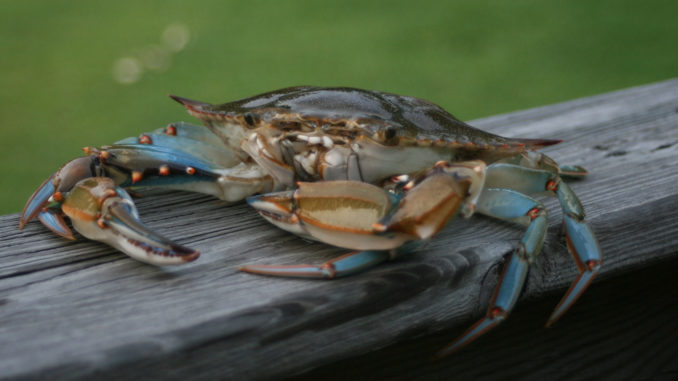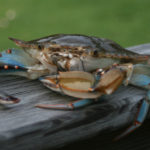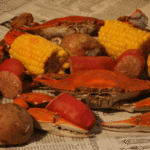
Involve the family in collection, consumption
August represents the last little bit of carefree summer for many families, especially those with kids about to start back to school. A terrific way to capitalize on these fleeting moments of family time is to get out with some low-tech equipment and put a few crabs in the cooler.
The blue crab — its Latin name, callinectes sapidus means “beautiful swimmer” — has a range spanning from Nova Scotia as far south as Argentina, making South Carolina’s coast a prime spot to find and catch blue crabs. Finding them is a relatively easy task; go anywhere the water is salty. Piers, docks, bridges and creeks make accessing blue crabs easy. Generally, low tide is a better option, but crabs are so abundant that taking them throughout the entire tide cycle is not a problem. Techniques used to catch blue crabs range from primitive hand lines to wire crab pots used by commercial crabbers.
The most-enjoyable way to catch blue crabs is probably the hand line and dip net, especially for children. Hand-lining requires no more than a dozen feet of string, a couple of ounces of weight and a piece of raw chicken: necks or backs work particularly well. Many tackle shops and hardware stores along the coast sell weighted hand-line clips and prepackaged line for a reasonable price.
The technique is simple: just lower the bait in 2 to 5 feet of water and wait for a few minutes. Give the line a light tug to feel for the extra weight of a crab, or crabs. Pull the line in slowly, and once you’ve got the crab in sight, it’s fairly easy to get a dip net underneath it.
Blue crabs are gluttonous, so it doesn’t require much skill to get one up to the surface and net it before it decides to let go. If one does get away, it is rarely an issue, because they’re greedy enough to return to the bait as soon as it’s back in place. When the crabbing is good, three or four hand lines can yield non-stop action, keeping kids and adults alike entertained for hours.
Hand-lining is less than ideal in some instances, especially when crabbing from piers or bridges that allow fishing. Crab baskets are only slightly more advanced than hand lines but they allow crabbers to fish from platforms well above the water line. Many tackle shops and hardware stores will keep them in stock. Unlike hand-lining, crab baskets do not require the use of a dip net, just a bucket or cooler to dump them into.
As much fun as it is to catch blue crabs, it’s important to handle them carefully. They are strong and aggressive, bearing claws that have no trouble breaking any skin that gets within reach. Crabbers should never feel guilty about eating their catch, because the blue crab would gladly return the favor if it was possible. Nothing can ruin the fun quite like a big blue crab attached to a finger or toe. It’s possible to grab a crab by the back two legs, keeping the claws out of reach, but that is a job best left to adults.
One of the best things about blue crabs is they can bring a family together twice, because a table covered in newspaper that is in turn covered with Lowcountry crab boil is almost impossible to resist, and it’s a tried-and-true coastal culinary tradition. Kept cool and moist, crabs can stay alive for a day or two, allowing crabbing one day and consumption on the next. However, dead crabs should not be cooked and consumed due to the rapid growth of bacteria that occurs once they expire.
Currently, regulations require that blue crabs be at least 5 inches wide from point to point before they are legal to keep, and any females with egg mass (sponge) should be released immediately. More information on crabbing and regulations can be found at www.dnr.sc.gov or from regulation guides available wherever licenses are sold.





Be the first to comment